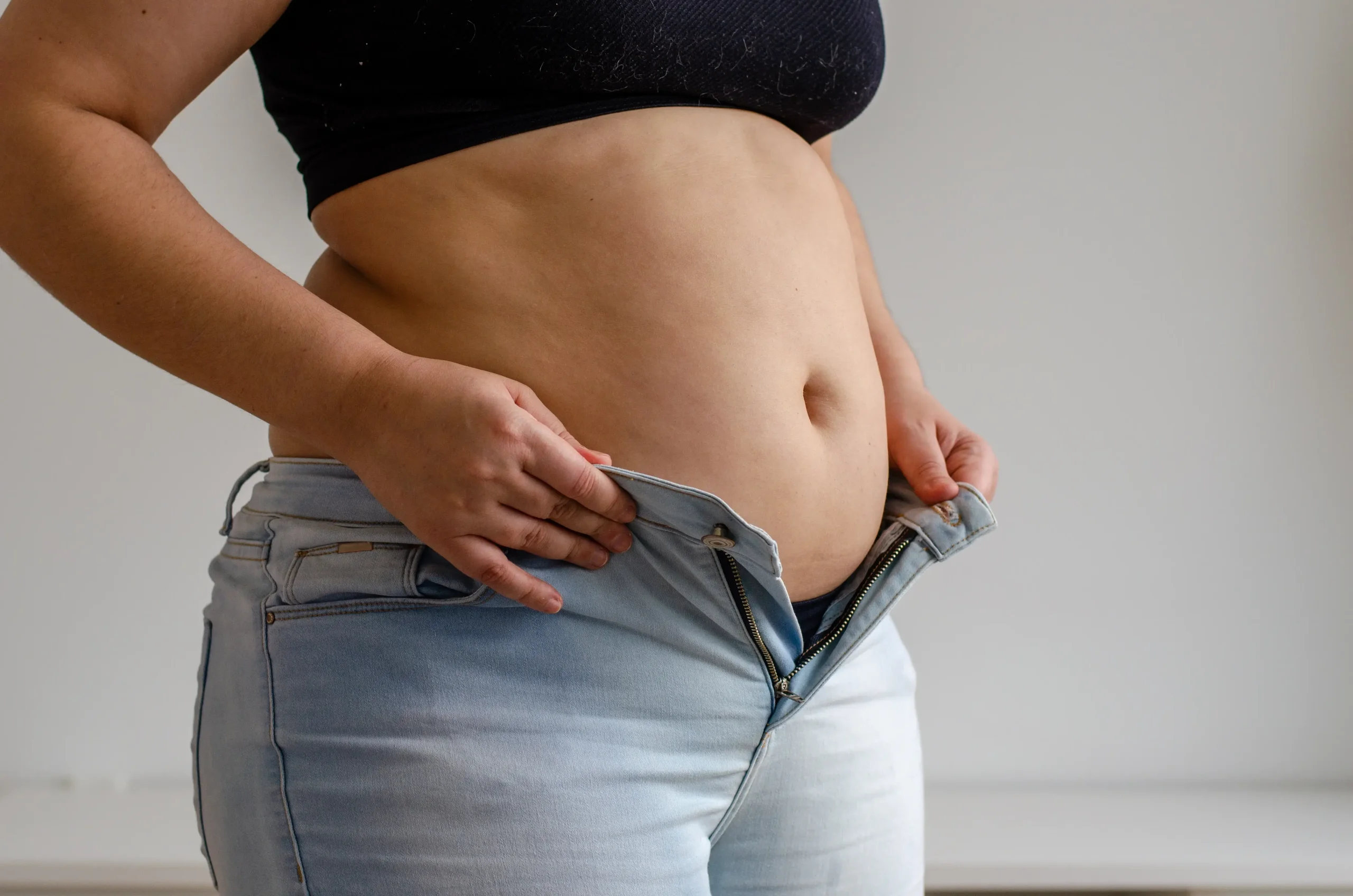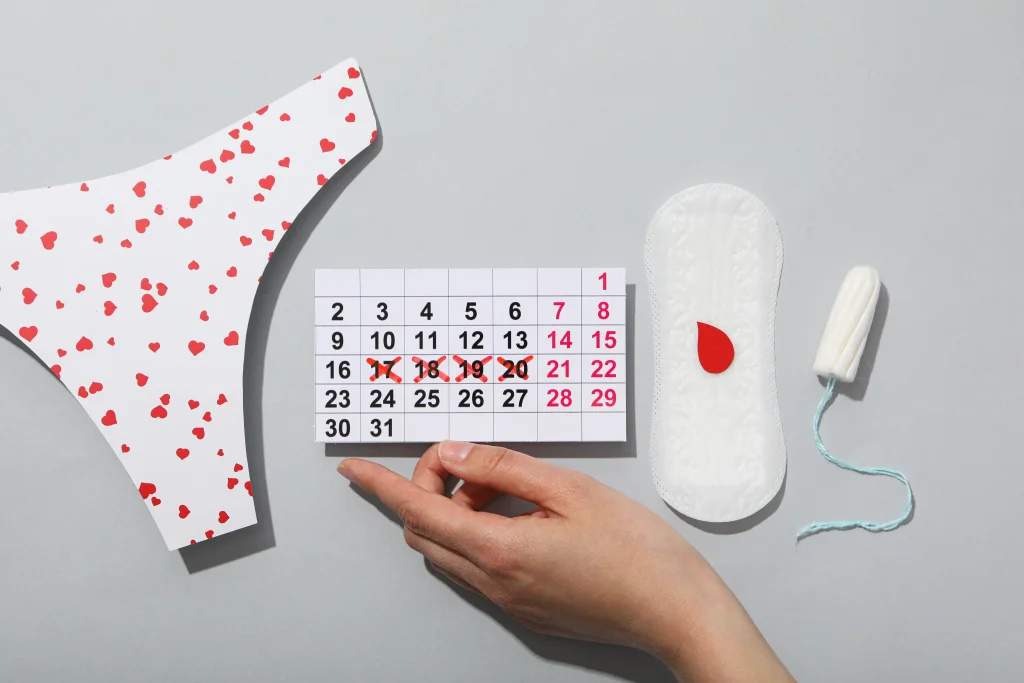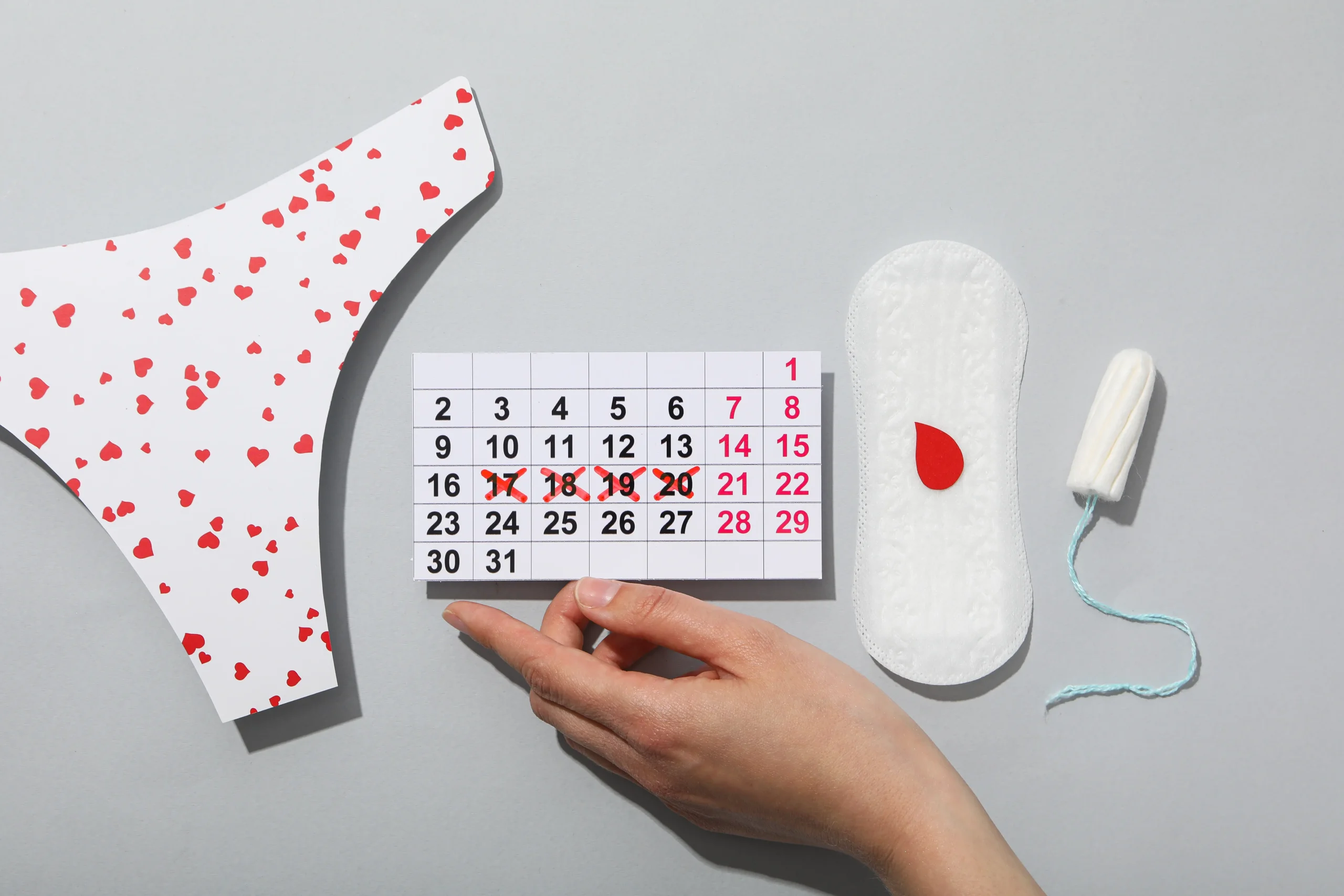

For most of us, our relationship with our periods has been shaped by decades of rhythms, some predictable, some not-so-much, and some simply endured because “that’s just how it is.” But something interesting happens after 40: your period begins speaking a new language: sometimes softly, sometimes loudly and most women are completely unprepared for the shift.
This phase is not menopause, but the lead-up to it. It’s called perimenopause, and it can begin as early as your late 30s, though for most women, the most noticeable changes start after 40.
What makes this stage confusing is that your cycle changes before your hormones fully ‘announce’ what’s happening. It’s like the body quietly reorganizing itself behind the scenes while you’re left decoding new patterns.
This article helps you understand the changes that are normal, the ones that are not, and the signs your body wants you to pay attention to.
| Hormone | Role in Your Menstrual Cycle |
|---|---|
| Estrogen | Builds the uterine lining, supports follicle development, and influences mood, energy, and vaginal lubrication. |
| Progesterone | Stabilizes the uterine lining after ovulation, supports mood regulation, and helps maintain a potential pregnancy. |
| FSH (Follicle-Stimulating Hormone) | Signals the ovaries to mature follicles (eggs) at the beginning of each cycle. |
| LH (Luteinizing Hormone) | Triggers ovulation—the release of a mature egg—and supports progesterone production afterward. |
After age 40, your ovaries become less responsive. This doesn’t mean they “stop!” They simply don’t follow the same rhythm anymore. The result?
Your brain works harder, sending stronger hormonal signals. Some months the ovary responds well, some months less so. This erratic communication leads to:
This hormonal instability is what causes the period changes after 40 that so many women experience.
These changes can feel surprising—but they are all part of the natural transition.
What it looks like:
Your period arrives earlier than usual, sometimes even twice a month.
Why it happens:
Your ovaries release eggs faster due to fluctuating FSH. Follicles mature more quickly → cycles shorten.
Normal?
Yes! Very normal in early perimenopause.
When to observe:
If cycles consistently drop below 21 days, track with a doctor.
You may notice:
Why?
Estrogen can spike unpredictably, building a thicker uterine lining → heavy days.
Progesterone often drops → shorter, disrupted shedding.
Normal?
Often, yes.
Seek help if:
Bleeding soaks through pads every hour, lasts >10 days, or includes large clots.
This is extremely common.
Some cycles have no ovulation → a missed or late period.
Next cycle: ovulation is strong → early or heavy period.
Normal?
Yes! This is one of the hallmark signs of perimenopause.
Many women experience a version of “PMS but worse”:
Why?
Progesterone (your calming hormone) declines faster than estrogen.
Normal?
Very common.
But if mood symptoms become overwhelming, support is available.
Even if your period looks “normal,” symptoms like:
…are part of the hormonal shift, not personality changes.
Normal?
Yes! But not something you have to “put up with.”
Some women describe:
These fluctuations reflect normal hormonal instability.
While many changes are expected, some symptoms need attention.
Here’s what’s NOT normal after 40:
| Possible Cause | What It Means / Why It Matters |
|---|---|
| Fibroids | Noncancerous uterine growths that can cause heavy bleeding and pelvic pressure. |
| Adenomyosis | Uterine tissue grows into the muscle wall, often leading to painful, heavy periods. |
| Thyroid Disorders | Both hypo- and hyperthyroidism can disrupt menstrual cycles and increase bleeding. |
| Endometrial Hyperplasia | Thickening of the uterine lining, which can cause heavy or prolonged bleeding and needs medical evaluation. |
If you feel weak, dizzy, or tired, get evaluated.
| Possible Cause | Description / Why It Matters |
|---|---|
| Hormonal Disorders | Imbalances in estrogen or progesterone can lead to irregular or mid-cycle bleeding. |
| Polyps | Small, benign growths in the uterus or cervix that can cause unexpected spotting or bleeding. |
| Endometriosis | Endometrial tissue outside the uterus may trigger bleeding between periods and pelvic pain. |
| Cervical Changes | Infections, inflammation, or abnormal cell changes can cause mid-cycle or post-sex bleeding. |
| Possible Cause | Description / Why It Matters |
|---|---|
| Thyroid Issues | Both overactive and underactive thyroid function can disrupt menstrual cycles and stop periods. |
| Premature Ovarian Insufficiency (POI) | Early decline in ovarian function before age 40, leading to missed periods and fertility changes. |
| Elevated Prolactin | High prolactin levels (hyperprolactinemia) can suppress ovulation and halt menstruation. |
| PCOS | Hormonal imbalance that interferes with ovulation, often causing irregular or absent periods. |
| Stress-Related Amenorrhea | High stress or low energy availability can disrupt the brain–ovary signaling pathway, stopping periods temporarily. |
| Type of Pain | Why It Needs Investigation |
|---|---|
| Interferes with daily life | Pain this intense can signal underlying conditions such as fibroids, cysts, or pelvic inflammatory issues. |
| Starts suddenly | Sudden, sharp pain may indicate a ruptured cyst, torsion, or other urgent conditions. |
| Is one-sided | Pain on one side can point to ovarian cysts, ectopic pregnancy, or ovarian torsion. |
| Occurs outside your period | Persistent or random pelvic pain may be linked to endometriosis, infections, or structural issues. |
Never normal; needs assessment for cervical or uterine causes.
If your period has been gone for 12 months or more, ANY bleeding must be checked immediately.
Here are truths rarely discussed. Even online:
Meaning period changes after 40 aren’t a short phase—they’re a slow transition.
This means:
Your emotional bandwidth is NOT shrinking, your neurochemistry is shifting.
Because your hormonal resilience is lower.
Which is why:
Insulin resistance becomes more common after 40.
Balanced meals → more stable estrogen + progesterone.
| Blood Sugar Support Tip | Why It Helps |
|---|---|
| Protein with every meal | Stabilizes blood sugar, reduces cravings, and supports steady energy. |
| Fiber daily | Slows digestion, balances glucose levels, and supports gut health. |
| Avoid long gaps without eating | Prevents blood sugar dips that trigger hormonal stress responses. |
| Pair carbs with fat/protein | Reduces blood sugar spikes and keeps energy steady longer. |
Helps with:
Especially:
These help offset the “emotional turbulence” of hormonal changes.
Aim for:
This stage is heavily influenced by inflammation.
Support with:
Apps don’t predict perimenopause cycles accurately, but tracking:
Women over 40 often say:
“Why didn’t anyone tell me this?”
“Why does no one talk about this phase?”
“Am I the only one feeling different?”
You’re not alone.
What you’re experiencing is your biology evolving, not malfunctioning.
Your body is doing exactly what it is meant to do: shift, adapt, transition.
With knowledge, support, and daily habits that nourish you, this phase can become one of the most intuitive, grounded, and self-connected seasons of your life.
Your cycle after 40 is a messenger, not a malfunction.
It tells you when:
Understanding period changes after 40 is not just about hormones, it’s about self-awareness.
And the more you understand what’s normal and what’s not, the more empowered you are to move through this transition feeling steady, supported, and deeply connected to your body.
Yes. Shorter cycles (21–25 days) are one of the most common early signs of perimenopause. Hormonal fluctuations—especially changing FSH levels—can make follicles mature faster, causing earlier ovulation and earlier periods.
However, if cycles consistently fall below 21 days, check in with a healthcare provider.
Hormonal imbalance is the main reason.
Estrogen spikes can thicken the uterine lining → heavier days.
Lower progesterone can lead to shorter or lighter bleeding.
Spotting, brown discharge, or a strange “light then heavy” pattern is also common.
Seek help if bleeding is extremely heavy, lasts over 10 days, or includes large clots.
Yes. Skipped or late periods often mean you didn’t ovulate that cycle (anovulation).
It’s also normal to have two periods close together afterward when ovulation resumes strongly.
But if you go 3 months without a period, get evaluated to rule out thyroid issues, elevated prolactin, PCOS, or premature ovarian insufficiency.
Because progesterone drops faster than estrogen in perimenopause.
This can intensify:
mood swings
irritability
anxiety
crying spells
breast tenderness
brain fog
This is common, but if mood symptoms feel overwhelming, support is available.
A cool bedroom (around 18°C), a consistent bedtime routine, reduced alcohol and caffeine, dim lighting in the evenings, stress-reduction practices, and limiting screen time all support restorative sleep. Combining these habits with hormone optimisation (HRT or supplements) provides the best long-term results.






 ×
×

